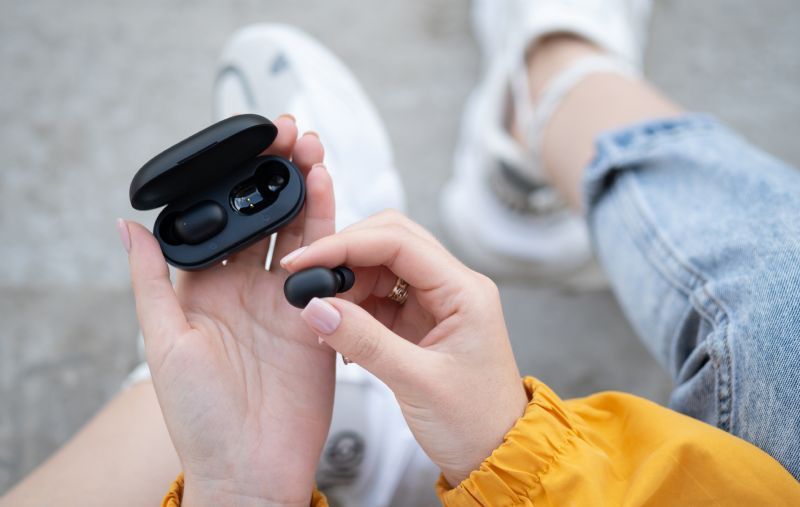 Written by Mike Price, OT
Written by Mike Price, OT
Sensory overload, a condition that transforms ordinary experiences into overwhelming challenges, is more common than you might think. Roughly one in six people, or about 16% of the population, battle with it. The numbers are significantly higher among those with Autism and other neurodevelopmental disabilities. Individuals dealing with these conditions must navigate a world where everyday sensations can quickly escalate into daunting obstacles. Fortunately, various tools and tactics can help reduce these sensory reactions, allowing individuals impacted to navigate their surroundings more easily and successfully.

While anyone can feel sensory overload in response to triggers such as piercing loudness or blinding light, this is a regular, even daily reality for some. Certain conditions like Autism, ADHD, PTSD, anxiety, and sensory processing disorder can hinder the brain's ability to appropriately interpret sensory input, resulting in heightened sensitivity to sensory overload. These individuals' sensory dials are turned up high, often making their surroundings feel like an overwhelming flood of information. Factors like environmental noise, visual complexity, or even personal states such as hunger or exhaustion can further amplify this sensory sensitivity. Recognizing and understanding these unique interplays of external and internal influences is the first step toward effectively managing sensory overload. It opens the door to strategies that help mitigate these overwhelming feelings, allowing for a more balanced, comfortable connection with their surroundings.
The experience of sensory overload is unique to every individual, with common responses including feeling overwhelmed, exhausted, uncomfortable, irritable, anxious, and restless. It might mean sudden sounds cause you to gasp and flinch, or bright lights induce a painful headache. Cognitive and emotional changes can also occur, where concentration might falter in mildly noisy environments, or irritability and restlessness may pervade your mood. Sensory overload can transform ordinary life into an ongoing challenge, making timely treatment essential to regain control and improve quality of life.

The first step in managing sensory overload involves proactively identifying and understanding.
Managing sensory overload begins with proactively identifying triggers to circumvent potentially overwhelming situations. However, implementing alternative solutions and coping strategies can be invaluable if overload is inevitable. Techniques like deep breathing, using fidget toys, and maintaining a balanced lifestyle with adequate sleep and a healthy diet can offer significant relief.
Adjusting your environment is equally crucial, be it lowering noise or dimming lights at home or using earplugs or blue-light-blocking glasses in public spaces. Quiet spots and grounding exercises can mitigate the impact of busy surroundings. Consider your sensory management approach as a versatile toolbox, ready to empower you in various scenarios and help you regain control during challenging moments. Alongside these strategies, engaging in calming activities like meditation, listening to music, or using sensory tools like a weighted blanket can also provide respite from sensory overload.
Weighted blankets are designed to offer a mild, evenly distributed weight, These blankets give a sense of comfort and stability to persons who struggle with sensory processing difficulties. The sensation can aid in soothing the nervous system and alleviate sensory overload.
 | Protac SenSit Sensory Chair Set View Product |
Bean bags create a cozy space to help release pent-up energy and get accustomed to tactile stimuli. The immersive seating experience promotes a sense of calm and tranquility, aiding in sensory regulation.
 | Cando Inflatable Exercise Balls View Product |
These simple tools can successfully manage restlessness and agitation. Exercise balls can also help sensory integration and awareness by activating broad muscle groups. In addition, exercise balls stimulate physical activity and enhance balance, promoting general well-being while providing a fun and engaging way to manage sensory overload.

These devices can help filter out loud and ambient noise and are excellent for managing auditory stimuli. Given their portability, they are great companions for outings, safeguarding against unexpected noise triggers.
 | Fitterfirst Foot Roller View Product |
Handy for managing anxiety and stress, foot rollers provide a soothing tactile experience that can be conveniently used anywhere, whether under your office desk or from your living room couch.
Navigating the complexities of sensory overload requires a comprehensive understanding of its triggers, symptoms, and effective management strategies. It's crucial to proactively alter environmental conditions, apply soothing techniques, and engage in calming activities whenever necessary. Tools like weighted blankets, earplugs, and foot rollers can significantly alleviate the distress associated with sensory overload, providing much-needed relief for those regularly facing these challenges.
The journey to managing sensory overload is ongoing, where continual exploration and knowledge acquisition play a pivotal role. That's why we encourage you to expand your knowledge by diving deeper into our Multi-Sensory category of products and accessing valuable insights from our Caregiver University resources. Armed with the right knowledge and effective strategies, sensory overload can transition from an overwhelming barrage to a manageable aspect of daily life.

Co-Founder of Rehabmart and an Occupational Therapist since 1993. Mike has spent his professional career working in multiple areas of Occupational Therapy, including pediatrics, geriatrics, hand therapy, ergonomics and inpatient / outpatient rehabilitation. Mike enjoys writing articles that help people solve complex therapeutic problems and make better product choices.